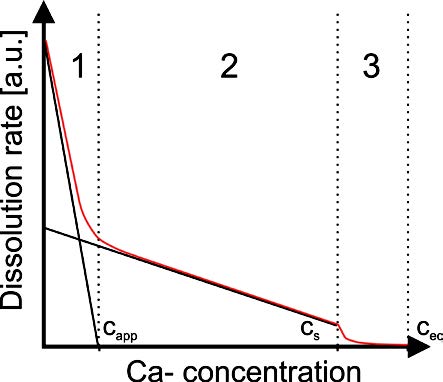Physics and Chemistry of Dissolution on Subaerialy Exposed Soluble Rocks by Flowing Water Films
DOI:
https://doi.org/10.3986/ac.v36i3.169Abstract
The basic process active in the formation of subaerial features on karst rocks is chemical dissolution of limestone or gypsum by water films flowing on the rock surface. The dissolution rates of limestone and gypsum into thin films of water in laminar flow are given by F = α(ceq-c), where (ceq-c) is the difference of the actual concentration c in the water film and the equilibrium concentration ceq with respect to the corresponding mineral. Whereas for gypsum α is determined by molecular diffusion the situation is more complex for limestone. Experiments are presented, which show that for high undersaturation, c<0.3ceq, the rate law is F = α( 0.3ceq-c) ,and α becomes higher by about a factor of ten than for the rates at c>0.3ceq. These rate laws are used to calculate denudation rates on bare rock surfaces exposed to rainfall with differing intensity. The estimations are in reasonable agreement to field data. Starting from the experiments on the formation of Rillenkarren on gypsum performed by Glew and Ford (1980), we suggest a new relation between their length from the crest to the “Ausgleichsfläche” and the inclination of the rock surface. This is also applied to field data of Rillenkarren on limestone provided by J. Lundberg and A. Gines. In view of the many parameters influencing the formation of Rillenkarren these correlations can be considered as satisfactory.
Downloads

Downloads
Published
How to Cite
Issue
Section
License
Authors guarantee that the work is their own original creation and does not infringe any statutory or common-law copyright or any proprietary right of any third party. In case of claims by third parties, authors commit their self to defend the interests of the publisher, and shall cover any potential costs.
More in: Submission chapter




